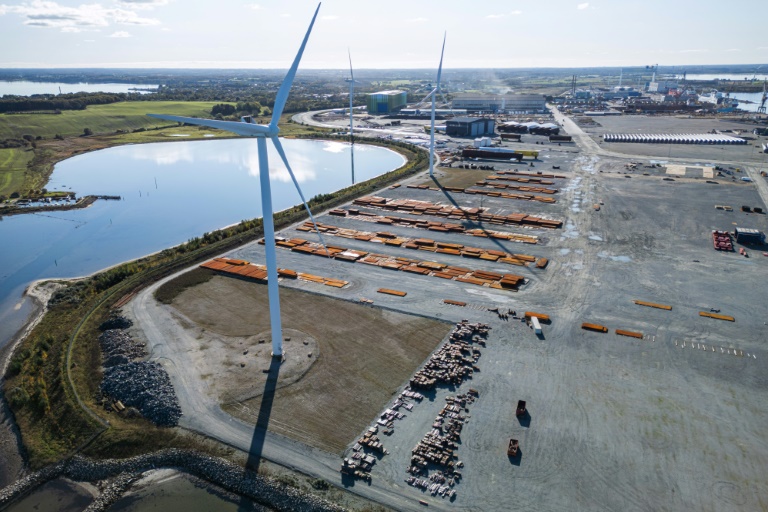The North Sea countries convene in Denmark to finalize significant commitments aimed at enhancing offshore wind power production, grappling with increasing competition from China, which currently dominates the market with 82% of new wind power orders, as reported by analyst firm Wood Mackenzie. The participating nations—Denmark, Belgium, the Netherlands, France, Germany, Luxembourg, Norway, and Ireland—alongside the European Commission, intend to agree on installing approximately 20,000 wind turbines in the North Sea by the year 2050. Danish energy minister Lars Aagaard emphasized the urgency of momentum in the EU’s renewable energy initiatives, stating the necessity to navigate the right trajectory in the face of global competition.
Denmark, a pioneer in wind energy since launching its first wind power farm in 1991, has positioned itself as a leader in this sector, deriving over 40% of its electricity from wind energy. The discussions are held in Odense, a crucial port that plays a vital role in the European wind power supply chain. Port director Carsten Aa highlighted that turbines produced at this site serve not only Europe but also extend to markets like the US and the Philippines. The port’s history is interlinked with the transition from a traditional shipping yard to a leading manufacturing site for wind turbine components, especially the nacelles—key structures that house the various operational components of wind turbines. Vestas, a prominent turbine manufacturer, produced its first nacelle at this site, converting what was once a shipbuilding facility into a hub of renewable energy technology.
The evolution of the Odense port has emphasized a need for increased production capacity to meet political ambitions and growing demands in the wind power sector. The shift in focus from shipping to wind power necessitated a workforce transformation, whereby previous shipyard workers are now utilized to produce wind turbines, showcasing a successful adaptation in skills and industry focus. This change is indicative of a broader trend throughout Europe, where ports like Nantes Saint-Nazaire in France are also exploring new facilities for future offshore wind farms. The need for local production capabilities is critical for Europe to stay competitive in this evolving industry.
As the industry matures, significant investments in infrastructure are evident, with Odense’s expansion mirroring a broader trend in wind power development across Europe. The port has seen a remarkable growth in employment, rising from 2,700 jobs during its shipyard days to over 3,200 currently within the burgeoning wind sector, growing by 18% in just two years. This local investment and job creation signal a robust commitment to renewable energy and a proactive stance against external competitors, particularly in the face of China’s stronghold in the market.
Industry leaders like Carsten Aa highlight the uniqueness of Odense’s geographical and infrastructural advantages, projecting a vision for Odense to lead European offshore wind power production. The massive area surrounding the former shipyard allows for innovative product developments and the establishment of new production facilities—a key element in competing against global players. The local community’s adaptation from traditional shipbuilding to the dynamic field of wind energy represents a successful transformation aligned with both economic and environmental goals.
In conclusion, the meeting of North Sea countries serves as a critical juncture for enhancing European offshore wind power capabilities amidst fierce global competition. Denmark’s long-standing commitment to renewable energy, alongside significant developments at key ports like Odense, underscores a concerted effort to solidify Europe’s position in the wind power market. The collaboration among member nations and their regulatory bodies aims not only to meet ambitious political targets but also to foster a sustainable energy future that can withstand external pressures from dominant market players such as China. The shift towards wind power signifies a significant step forward in addressing climate change while supporting local economies—an essential balance as Europe pushes toward its renewable energy goals.

